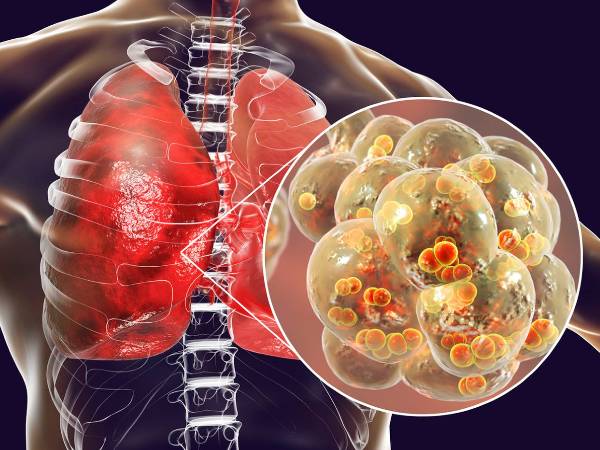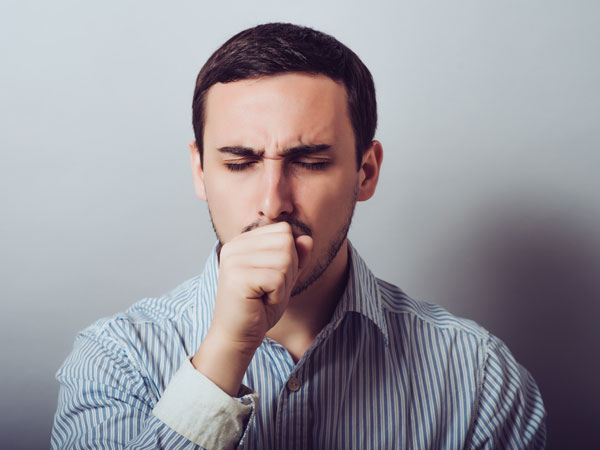Just In
- 1 hr ago

- 3 hrs ago

- 4 hrs ago

- 6 hrs ago

Don't Miss
- Sports
 Sunil Narine Record vs RCB & Stats at Eden Gardens Ahead Of IPL 2024 Match 36
Sunil Narine Record vs RCB & Stats at Eden Gardens Ahead Of IPL 2024 Match 36 - Movies
 Love Sex Aur Dhokha 2 Box Office Collection Day 1: LSD 2 Gets A Poor Opening; Fails To Beat Vidya's Film
Love Sex Aur Dhokha 2 Box Office Collection Day 1: LSD 2 Gets A Poor Opening; Fails To Beat Vidya's Film - Technology
 Best Noise-Cancelling Earbuds Under Rs 5,000: CMF Buds Pro, Redmi Buds 5, Realme Buds Air 5, and More
Best Noise-Cancelling Earbuds Under Rs 5,000: CMF Buds Pro, Redmi Buds 5, Realme Buds Air 5, and More - Finance
 62-Yrs Old Fertilizers PSU Set To Recommend Dividend Rewards, Rises 78% In 1-Yr; Yield 4.49%
62-Yrs Old Fertilizers PSU Set To Recommend Dividend Rewards, Rises 78% In 1-Yr; Yield 4.49% - News
 Punjab Human Rights Panel Issues Notice To ADGP In Sangrur Jail Clash Case
Punjab Human Rights Panel Issues Notice To ADGP In Sangrur Jail Clash Case - Education
 UPMSP Class 10 and 12 Results 2024 Released Today, Check the Details Here
UPMSP Class 10 and 12 Results 2024 Released Today, Check the Details Here - Automobiles
 Tesla CEO Elon Musk's Much-Awaited Visit to India Deferred, Leaving Questions Unanswered
Tesla CEO Elon Musk's Much-Awaited Visit to India Deferred, Leaving Questions Unanswered - Travel
 Journey From Delhi To Ooty: Top Transport Options And Attractions
Journey From Delhi To Ooty: Top Transport Options And Attractions
Pneumonia: Causes, Symptoms, Risk Factors, Diagnosis, Treatment And Prevention
Pneumonia is the infection of the lungs in which the air sacs (known as alveoli) get filled with pus or fluid causing inflammation and difficulties while breathing. The infection is caused mainly by bacteria. However, it can be caused by other microorganisms like virus and fungi. [1]

Streptococcus pneumoniae, a Gram-positive bacterium, is the most common cause of pneumonia. A yeast-like fungus named Pneumocystis jiroveci is another germ responsible for this lung condition while among viruses, the flu virus is considered to cause pneumonia.
Pneumonia is life-threatening when it affects older people, infants, chronic disease patients or people with a weakened immune system. According to a study, there were around 0.56 million severe episodes of pneumococcal pneumonia (due to Streptococcus bacteria) in India in 2010. Also, 0.35 million children under the age of 5 years died due to the disease. The highest number of cases of pneumonia are reported in the states of Bihar, Uttar Pradesh and Madhya Pradesh. Simultaneously, the top 5 countries affected by this lung infection are India, China, Bangladesh, Pakistan and Indonesia. [2]
Causes Of Pneumonia
Multiple numbers of bacteria, fungi and virus are responsible for causing pneumonia. They are of 4 types:
- Bacterial pneumonia: Mainly caused by bacteria named Streptococcus pneumoniae [3]
- Atypical pneumonia: Caused due to atypical or unique-featured bacteria such as Mycoplasma pneumoniae (Walking pneumonia), Legionella pneumophila (Legionnaires' disease) and Chlamydia pneumoniae (Chlamydia pneumonia) [4]
- Fungal pneumonia: It mainly affects people with a weakened immune system or some chronic health condition. They are usually found in the soil and also varies according to the location. [5]
- Viral pneumonia: Cold and flu viruses are responsible for causing pneumonia. [6]
Types Of Pneumonia
1. Hospital-acquired pneumonia (HAP): It is also known as nosocomial pneumonia and develops in an individual within 48-72 hours when he/she is hospitalised for another illness. It can be serious as the individual is sick and the bacteria that have affected, have already adapted themselves to the antibiotics. People on breathing ventilators are at high risk of HAP. [7]
2. Community-acquired pneumonia (CAP): It is a common type of pneumonia acquired outside the healthcare facilities. CAP is the leading cause of mortality and morbidity among other infectious disorders. [8]
3. Healthcare-acquired pneumonia (HCAP): It occurs in non-hospitalized patients who live in a long-term care facility, comes in contact during intravenous therapy or one who receive outpatient treatment in hemodialysis clinic or hospital. They are mainly at risk of multidrug-resistant organisms. [9]
4. Aspiration pneumonia: It occurs when a person aspirates saliva, solid foods, or vomit into the lungs instead of the stomach. Such particles cause infection in the lungs. [10]

Symptoms Of Pneumonia
Symptoms of pneumonia can range from mild to severe. Its occurrence depends on the type of microorganism, age, health and other medical conditions of the patient. However, common symptoms include the following:
- Cough with phlegm [11]
- Fever or chills
- Shortness of breath
- Fatigue
- Fast heartbeat [12]
- Sweating
- Diarrhoea [13]
- Headache
- Cyanosis, bluish or greyish discolouration of the skin [14]
- Chest pain
Risk Factors Of Pneumonia
The risk of pneumonia is high in people who fall under the following categories:
- Above age 65 [15]
- Below age 2 [16]
- With a weak immune system like HIV patients, chemotherapy patients and organ transplant patients [1]
- With autoimmune disorders like rheumatoid arthritis and multiple sclerosis [17]
- With lung conditions like asthma, pulmonary fibrosis and bronchiectasis
- Hospitalized or under breathing ventilators
- Smoke or drink [18]
- With neurological conditions like Parkinson's disease
- Exposed to industrial toxic smoke for a long time
- Pregnant [19]
Complications Of Pneumonia
Complications of pneumonia include the following:
- Spread of bacteria in the blood (Bacteremia)
- Fluid build-up in the area between pleura and chest wall (pleural effusion) [20]
- Lung abscess
- Empyema (a collection of pus develops in the cavity) [21]
- Meningitis (the infection spread to the meninges of the brain)
- Septic arthritis (when the bacteria transfer to the joints)
Diagnosis Of Pneumonia
Diagnosis of pneumonia includes the following processes:
- Medical history: To determine a patient's age, any medical condition, occupation, recent illness, recent travel and other details
- Physical exam: Determined by placing a stethoscope on the chest of the patient to hear bronchial breath sounds
- X-ray: To find out the location and extent of lung inflammation
- Blood test: To identify the type of microorganism causing pneumonia [22]
- Pulse oximetry: To monitor the saturation of oxygen in the patient's blood
- Sputum test: To find out whether it is a bacterial or fungal infection
- Bronchoscopy: Here, a thin lighted tube is inserted into the airways to visualize its internal portion. [23]

Treatment Of Pneumonia
Treatment of pneumonia depends on its types and severity. Common treatment methods include the following:
- Medications: Antibiotic medicines are used to treat bacterial pneumonia, antifungal medication for pneumonia caused due to fungus and antiviral drugs for viral pneumonia. These medications are taken for weeks to clear the infection of the lungs. [24]
- Over-the-counter medications: To manage the symptoms of pneumonia such as fever, cough and muscle pain
- Oxygen therapy: Given when the oxygen level in the blood is low [25]
- Respiratory therapy: Here, specific medicines are delivered directly into the lungs.
Tips To Deal With Pneumonia
- Quit smoking [18]
- Cover while coughing or sneezing
- Wash hands with disinfectant at regular intervals
- Strengthen the immune system by a healthy diet plan and exercise
- Stay hydrated throughout the day [26]
- Managing ongoing medical conditions by timely medications
- Take a lot of rest
- Drink warm beverages or take steamy baths to ease your breathing
- [1] InformedHealth.org [Internet]. Cologne, Germany: Institute for Quality and Efficiency in Health Care (IQWiG); 2006-. Pneumonia: Overview. 2018 Aug 9.
- [2] Farooqui, H., Jit, M., Heymann, D. L., & Zodpey, S. (2015). Burden of Severe Pneumonia, Pneumococcal Pneumonia and Pneumonia Deaths in Indian States: Modelling Based Estimates. PloS one, 10(6), e0129191. doi:10.1371/journal.pone.0129191
- [3] Sattar SBA, Sharma S. Bacterial Pneumonia. [Updated 2019 Feb 11]. In: StatPearls [Internet]. Treasure Island (FL): StatPearls Publishing; 2019 Jan-.
- [4] Basarab, M., Macrae, M. B., & Curtis, C. M. (2014). Atypical pneumonia. Current opinion in pulmonary medicine, 20(3), 247-251.
- [5] Dharmic, S., Nair, S., & Harish, M. (2015). An unusual cause of fungal pneumonia. Journal of pharmacy & bioallied sciences, 7(Suppl 1), S67–S69. doi:10.4103/0975-7406.155808
- [6] Freeman AM, Soman-Faulkner K, Leigh, Jr TR. Viral Pneumonia. [Updated 2019 May 10]. In: StatPearls [Internet]. Treasure Island (FL): StatPearls Publishing; 2019 Jan-.
- [7] Shebl E, Gulick PG. Nosocomial Pneumonia. [Updated 2019 May 4]. In: StatPearls [Internet]. Treasure Island (FL): StatPearls Publishing; 2019 Jan-.
- [8] Steel, H. C., Cockeran, R., Anderson, R., & Feldman, C. (2013). Overview of community-acquired pneumonia and the role of inflammatory mechanisms in the immunopathogenesis of severe pneumococcal disease. Mediators of inflammation, 2013, 490346. doi:10.1155/2013/490346
- [9] Torres-García, M., Pérez Méndez, B. B., Sánchez Huerta, J. L., Villa Guillén, M., Rementería Vazquez, V., Castro Diaz, A. D., … de la Rosa-Zamboni, D. (2019). Healthcare-Associated Pneumonia: Don't Forget About Respiratory Viruses!. Frontiers in pediatrics, 7, 168. doi:10.3389/fped.2019.00168
- [10] Sanivarapu RR, Gibson JG. Aspiration Pneumonia. [Updated 2019 Sep 29]. In: StatPearls [Internet]. Treasure Island (FL): StatPearls Publishing; 2019 Jan-.
- [11] Farzan S. Cough and Sputum Production. In: Walker HK, Hall WD, Hurst JW, editors. Clinical Methods: The History, Physical, and Laboratory Examinations. 3rd edition. Boston: Butterworths; 1990. Chapter 38.
- [12] Nichols L. (2017). Pneumonia as a trigger for atrial fibrillation. Journal of rural medicine : JRM, 12(2), 146–148. doi:10.2185/jrm.2937
- [13] Kobayashi, M., Mwandama, D., Nsona, H., Namuyinga, R. J., Shah, M. P., Bauleni, A., … Steinhardt, L. C. (2017). Quality of Case Management for Pneumonia and Diarrhea Among Children Seen at Health Facilities in Southern Malawi. The American journal of tropical medicine and hygiene, 96(5), 1107–1116. doi:10.4269/ajtmh.16-0945
- [14] Adeyinka A, Kondamudi NP. Cyanosis. [Updated 2019 Jun 3]. In: StatPearls [Internet]. Treasure Island (FL): StatPearls Publishing; 2019 Jan-.
- [15] Simonetti, A. F., Viasus, D., Garcia-Vidal, C., & Carratalà, J. (2014). Management of community-acquired pneumonia in older adults. Therapeutic advances in infectious disease, 2(1), 3–16. doi:10.1177/2049936113518041
- [16] Ebeledike C, Ahmad T. Pediatric Pneumonia. [Updated 2019 Jan 7]. In: StatPearls [Internet]. Treasure Island (FL): StatPearls Publishing; 2019 Jan-.
- [17] Chen, M., Tian, X., Qin, F., Zhou, J., Liu, J., Wang, M., & Xu, K. F. (2015). Pneumocystis Pneumonia in Patients with Autoimmune Diseases: A Retrospective Study Focused on Clinical Characteristics and Prognostic Factors Related to Death. PloS one, 10(9), e0139144. doi:10.1371/journal.pone.0139144
- [18] Bello, S., Menéndez, R., Antoni, T., Reyes, S., Zalacain, R., Capelastegui, A., ... & de Castro, F. R. (2014). Tobacco smoking increases the risk for death from pneumococcal pneumonia. Chest, 146(4), 1029-1037.
- [19] Goodnight, W. H., & Soper, D. E. (2005). Pneumonia in pregnancy. Critical care medicine, 33(10), S390-S397.
- [20] Yang, W., Zhang, B., & Zhang, Z. M. (2017). Infectious pleural effusion status and treatment progress. Journal of thoracic disease, 9(11), 4690–4699. doi:10.21037/jtd.2017.10.96
- [21] McCauley, L., & Dean, N. (2015). Pneumonia and empyema: causal, casual or unknown. Journal of thoracic disease, 7(6), 992–998. doi:10.3978/j.issn.2072-1439.2015.04.36
- [22] National Clinical Guideline Centre (UK). Pneumonia: Diagnosis and Management of Community- and Hospital-Acquired Pneumonia in Adults. London: National Institute for Health and Care Excellence (UK); 2014 Dec. (NICE Clinical Guidelines, No. 191.) 7, Diagnostic tests.
- [23] Baselski, V. S., & Wunderink, R. G. (1994). Bronchoscopic diagnosis of pneumonia. Clinical microbiology reviews, 7(4), 533–558. doi:10.1128/cmr.7.4.533
- [24] Lee, M. S., Oh, J. Y., Kang, C. I., Kim, E. S., Park, S., Rhee, C. K., … Kiem, S. (2018). Guideline for Antibiotic Use in Adults with Community-acquired Pneumonia. Infection & chemotherapy, 50(2), 160–198. doi:10.3947/ic.2018.50.2.160
- [25] Zhang, Y., Fang, C., Dong, B. R., Wu, T., & Deng, J. L. (2012). Oxygen therapy for pneumonia in adults. Cochrane Database of Systematic Reviews, (3).
- [26] Faverio, P., Aliberti, S., Bellelli, G., Suigo, G., Lonni, S., Pesci, A., & Restrepo, M. I. (2014). The management of community-acquired pneumonia in the elderly. European journal of internal medicine, 25(4), 312–319. doi:10.1016/j.ejim.2013.12.001
-
 healthPneumonia Outbreak: Pediatrician Shares Insights On How To Protect Children, Safety Practices and Guidelines
healthPneumonia Outbreak: Pediatrician Shares Insights On How To Protect Children, Safety Practices and Guidelines -
 pregnancy parentingMysterious Pneumonia Outbreak In China: What Are The Long-Term Effects Of Pneumonia In Children?
pregnancy parentingMysterious Pneumonia Outbreak In China: What Are The Long-Term Effects Of Pneumonia In Children? -
 pregnancy parentingWorld Pneumonia Day: Risk Factors Of Pneumonia In Children
pregnancy parentingWorld Pneumonia Day: Risk Factors Of Pneumonia In Children -
 healthStay Informed: The Hidden Dangers of Legionnaires' Disease and How to Prevent It
healthStay Informed: The Hidden Dangers of Legionnaires' Disease and How to Prevent It -
 disorders cureCOVID Pneumonia Reappearing: Everything About The Symptoms, Causes And Prevention
disorders cureCOVID Pneumonia Reappearing: Everything About The Symptoms, Causes And Prevention -
 healthWorld Pneumonia Day 2022: History, Significance And Theme
healthWorld Pneumonia Day 2022: History, Significance And Theme -
 wellnessOld Age Is A Risk Factor For Pneumonia Due To The Omicron Variant: Study
wellnessOld Age Is A Risk Factor For Pneumonia Due To The Omicron Variant: Study -
 healthNew Drug Could Treat Patients Hospitalised With COVID-19 Pneumonia: Lancet Study
healthNew Drug Could Treat Patients Hospitalised With COVID-19 Pneumonia: Lancet Study -
 babyWorld Pneumonia Day: Childhood Pneumonia Mainly Responsible For Under-5 Deaths In India And Globally
babyWorld Pneumonia Day: Childhood Pneumonia Mainly Responsible For Under-5 Deaths In India And Globally -
 disorders cureDexamethasone Vs Methylprednisolone In COVID-19 Treatment: Which Drug Is Better?
disorders cureDexamethasone Vs Methylprednisolone In COVID-19 Treatment: Which Drug Is Better? -
 disorders cureWorld Pneumonia Day 2020 (12 November): What Is Ventilator-Associated Pneumonia?
disorders cureWorld Pneumonia Day 2020 (12 November): What Is Ventilator-Associated Pneumonia? -
 wellnessHow Does Prone Positioning Help In The Management Of COVID-19 In Patients?
wellnessHow Does Prone Positioning Help In The Management Of COVID-19 In Patients?


 Click it and Unblock the Notifications
Click it and Unblock the Notifications



